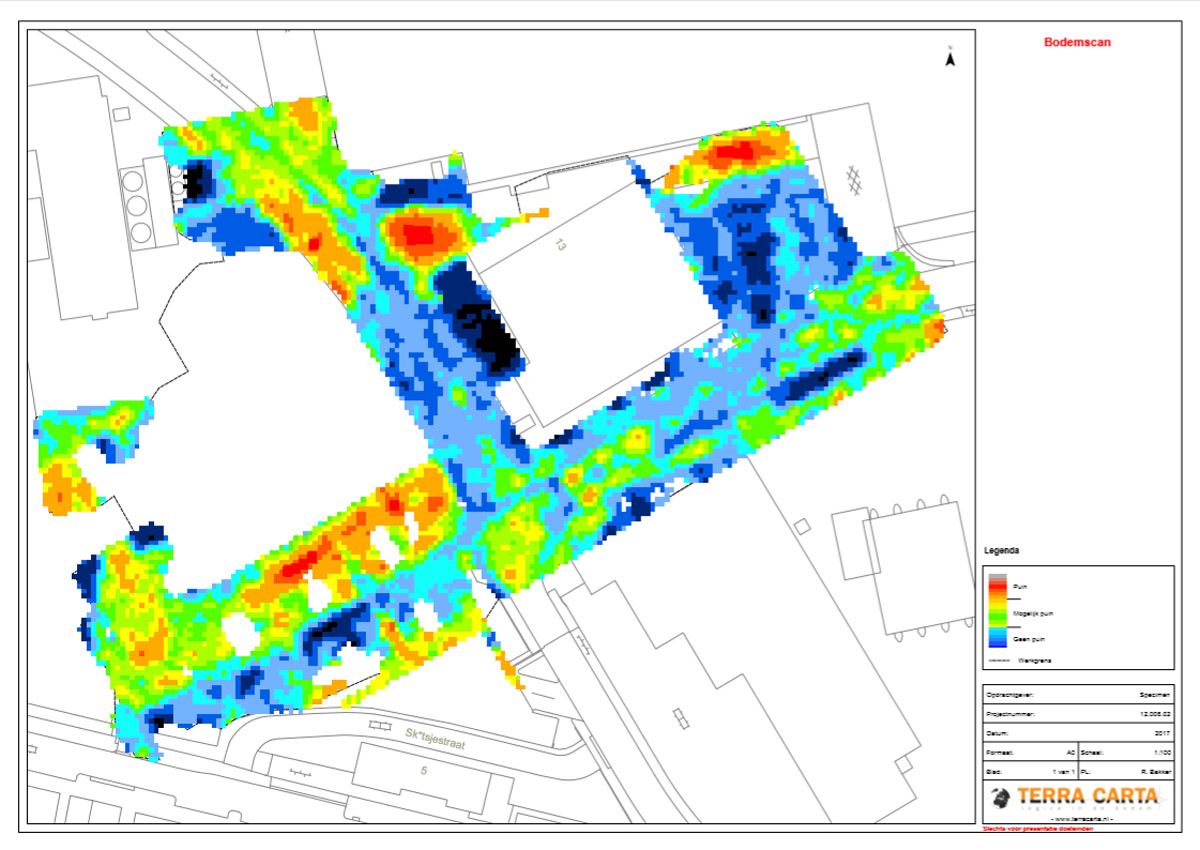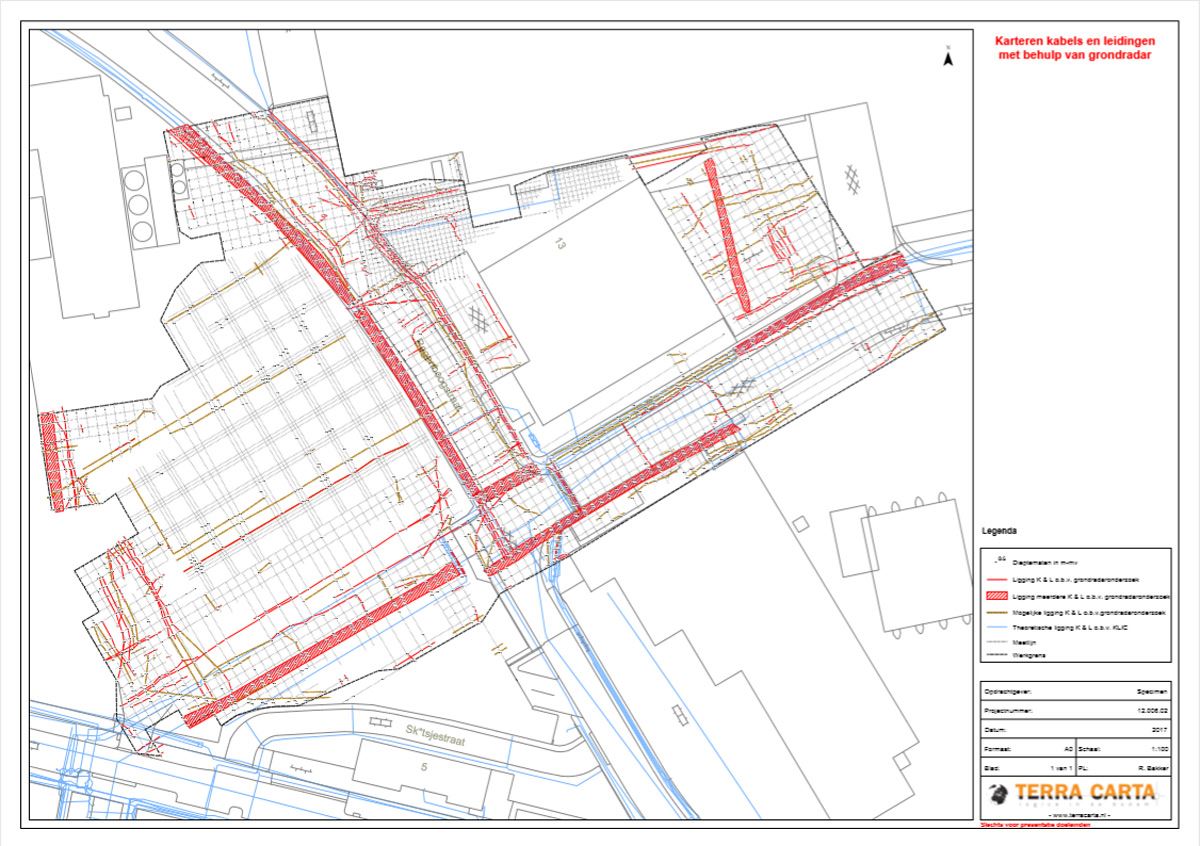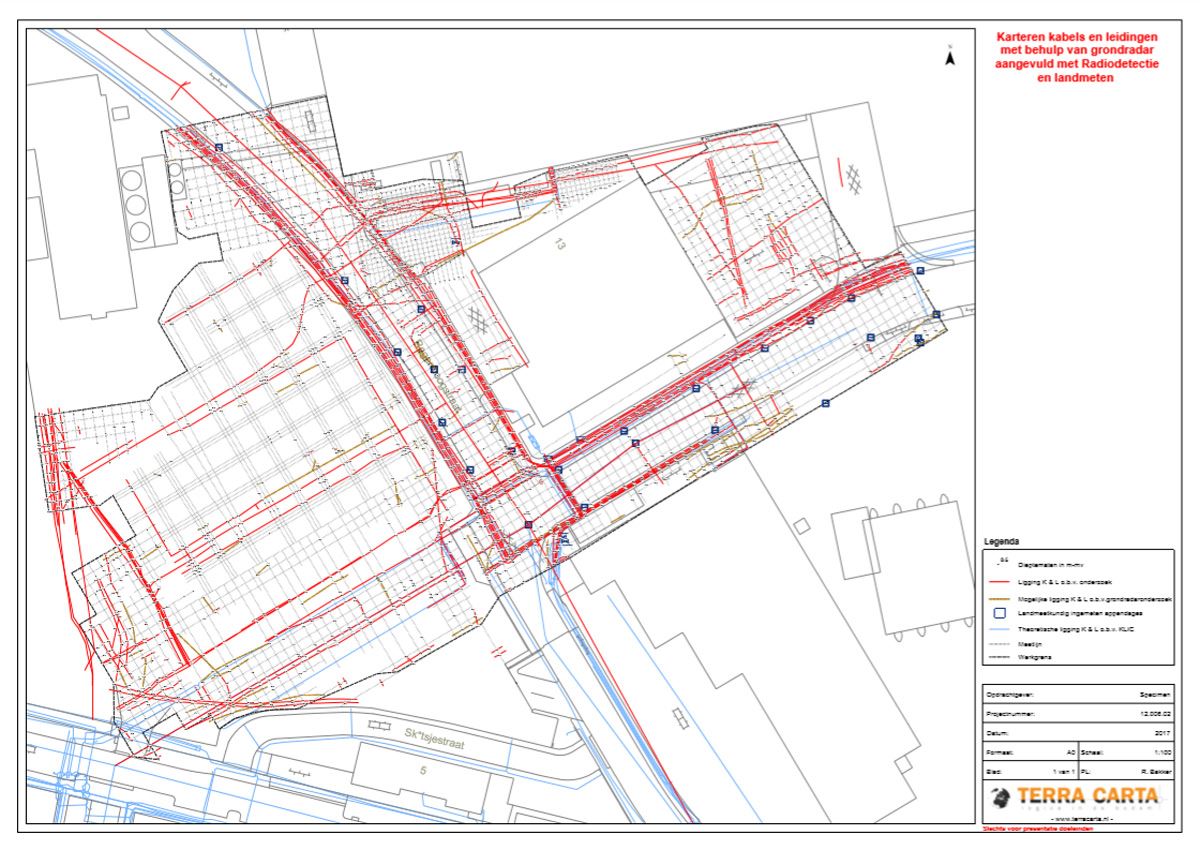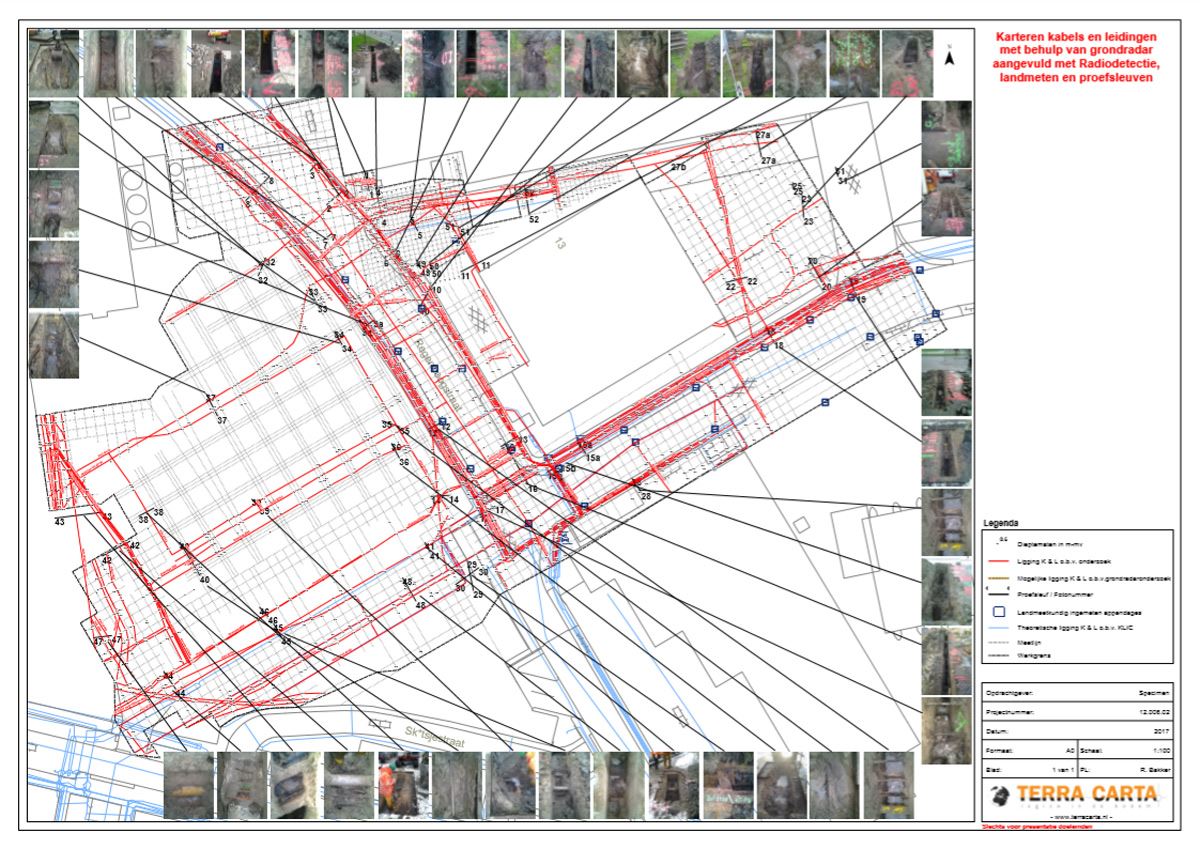GPR – “Soil scan” or utility investigation?
The demand of GPR grows more and more. Direct demands for a GPR investigation are coming or sometimes even disguised as a “soil scan”.

GPR (Ground Penetrating Radar) is seen as a “soil scanner” that has the solution to all sorts of problems and of course, it seems like such an amazing idea. I don’t know anything, I throw an x-ray over it and I know everything.
But what do you actually want to know? An indication if there are any underground utilities in the area. do you want to have the exact positioning of all cables or do you simply want a quick scan for obstacles, foundation remains or clusters of debris?
You should know then that a GPR cannot ‘see’ all objects under every condition. Stelcon concrete slabs, clay, layers of debris and some hardening types all influence the signal of the GPR and it is not always clear if the signal is negatively or positively influenced.
This indistinctness sometimes brings a level of abstraction in the investigation which is very difficult to put your finger on, which can lead to a feeling of discontent for the client if there was no upfront communication about this. So, when someone asks for a ‘soil scan’ and does not specify what the expectation is, they can feel a bit cheated.
Is GPR not a good solution then? GPR is in many cases a good solution, but it is important to know the limitations and anticipate those limitations. If you want a utility investigation, you will have to go a step further.
An investigation into utilities with GPR can easily be of a higher quality with relatively limited other methods, but requires more effort (and thus is more expensive) than a simple ‘soil scan’.
Besides the data of the GPR scan, metal utilities can easily be followed with simple EML equipment (for the laymen: radiodetection, CAT and Genny). By combining both research techniques, you gather more data but you also have more ways of going around the chance of GPR signal penetration failing. In a lot of situations, this will cause you to be unable to further follow a detected cable. Questions that arise in situations like these are for example; Did our signal fail? Did the cable get cut?
Often, an expert will make an assumption about the continuation. When you add EML data into the mix, an expert can make an all-around better and well-founded choice.
Eventually, a product will come into existence that has less inconsistencies inside of the research area. By targeting these and anticipate them by trench digging (or holes), because you can dig very precisely, it is possible to map almost every utility, even if the GPR has trouble with the type of soil.
1. GPR “soil scan”:
The location is is surveyed with GPR, after which the data gets put through a software so that any soil deviations get highlighted.
2. Utility investigation with just GPR:
The location is surveyed with GPR, after which the data is accurately looked into devations that look like the position of utilities. The chance that not every cable is fully mapped is big, because when there’s multiple it is very hard to see the difference between the individual cables. Besides that, objects like rebar, tree roots and cable remains can also be classified as a utility. follow-up research can make sure this is not the case.
3. Utility investigation with GPR, EML and georeferencing:
The area is surveyed with GPR, after which the data is accurately looked into any deviations that could be seen as a utility. Because there is additional data and not just GPR data we we can say with a high certainty if sometimes pieces of cable can be extended instead of being discriminated as an object. Also, all above ground utilities are georeferenced, so we can see some cables and classify and interpret the detection data much easier.
4. Utility investigation using GPR, EML, georeferencing and trench digging:
Because almost all indications are known on a centimeter level with a detection survey, we can dig very precisely. After all, you already know where and how deep you have to dig. For a cable that is 80 centimers deep, you only have to lift a few paving stones. With a little effort and not a lot of impact for the surrounding area you can dig a lot of trenches on these positions, and classify and judge them too. This way, it is possible to have an insight on the position of almost any cable. Besides all of that it is also possible to anticipate on existing utility maps like the country’s cadaster (at least in The Netherlands, the Cadaster also has information on underground utilities). Are you going to dig on the existing map’s coordinates or where you detected something, but it is 1.5 meters away from the map?



